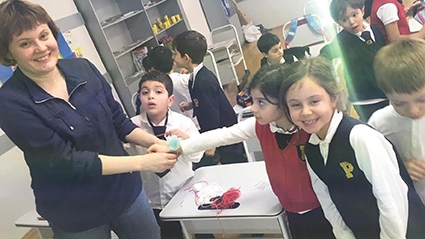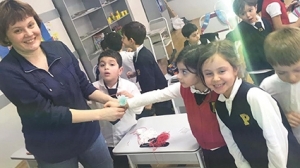Martisor Legends & New Beginnings
Martisor (pronounced Martseeshohr) is a charming old Romanian tradition, celebrating spring, youth and femininity. It is also a nickname for the month of March (little March).
The holiday is celebrated at the beginning of spring, on March 1, in Romania, Moldova, and all territories inhabited by Romanians. Similar, though not identical, customs can be found in Bulgaria, Albania and Italy.
From 1st to 9th March, the streets of Romanian cities are decorated with flowers, animal-shaped objects, lucky charms, small objects of art, and various gifts tied with red and white thread, the symbol of Martisor.
The Martisor adornment of thread is a tradition which goes back some 8,000 years, when people use to give each other red and white pebbles wrapped in string.
The Martisor talisman itself, made of red and white strings of silk or wool, twisted together, is a symbol of renewal and the rebirth of nature. It is given to loved ones to bring them luck and wealth. The Dacians (Romanian ancestors) believed these amulets brought fertility and beauty and prevented sunburn. They were worn when the trees started blooming and were later hung on the trees themselves.
In ancient Rome, New Year's Eve was celebrated on March 1 'Martius' — as the month was called in honor of the god Mars. Mars was the god of war and an agricultural guardian who ensured nature's rebirth. Therefore, the red and white colors of Martisor may represent the colors of war and peace.
The Romanian and Moldavian community, The Center of friendship Moldova and Georgia – Casa Mare and The Center of friendship Romania and Georgia, with the support of the Embassy of Romania in Georgia and Honorary Consulate of the Republic of Moldova in Georgia, are working together to spread the beauty of the Martisor Romanian tradition in Georgia.
Children from European School, the Tbilisi German International School, Public School no 92 and QSI International School of Tbilisi organized craft workshops to make the traditional talismans and good luck postcards after hearing about the legends.
"Students were very excited that they got the chance to make their own bracelets to celebrate the beginning of spring according to the Martisor tradition. They used a red and a white yarn and worked in pairs to make accessories for themselves, for each other, for their parents and friends. They had a lot of fun working together and picking different charms to decorate their bracelets. They had to work simultaneously, twisting their threads in opposite directions. After making their bracelets, they ate a cake specially made for this occasion and posed for pictures to show off their work."
Further, a group of Romanian and Moldavian ladies and children worked to create a “Martisoare” exhibition to share with the Georgian public. This is to be held in one of the main museums next week, venue to be confirmed. All are welcome to come and meet the Romanian tradition and receive gifts of Martisor.
March 1st, a phenomenon old and ever new, has led the authorities of Romania, together with those of the Republic of Moldova, to begin procedures to include the Martisor on the UNESCO Heritage list.
The Legend
The fight of Spring and Winter
There are many different legends which hint at about the beginnings of this beautiful holiday. One of them tells that on the first day of March Spring came out to the edge of the forest. It looked around and saw in the blackthorn a tiny snowdrop appearing from the snow. Kind Spring wanted to help the snowdrop and started to take away the snow and thorny branches. The Winter saw this and became angry. She brought severe wind and snow to wipe out a little flower. However, Spring covered the flower with her hands. She wounded her finger and hot blood dropped onto the flower. Thanks to that, the snowdrop came to life. Thus, Spring beat Winter. Since that time people have worn little Martisor as symbols of red blood on white snow.
WHERE: Georgian National Museum. D. Shevardnadze National Gallery. Address: 11, Shota Rustaveli Ave.
WHEN: From March 1, 11AM
Lavinia Chitoran-Muller and Olga Imerlishvili











